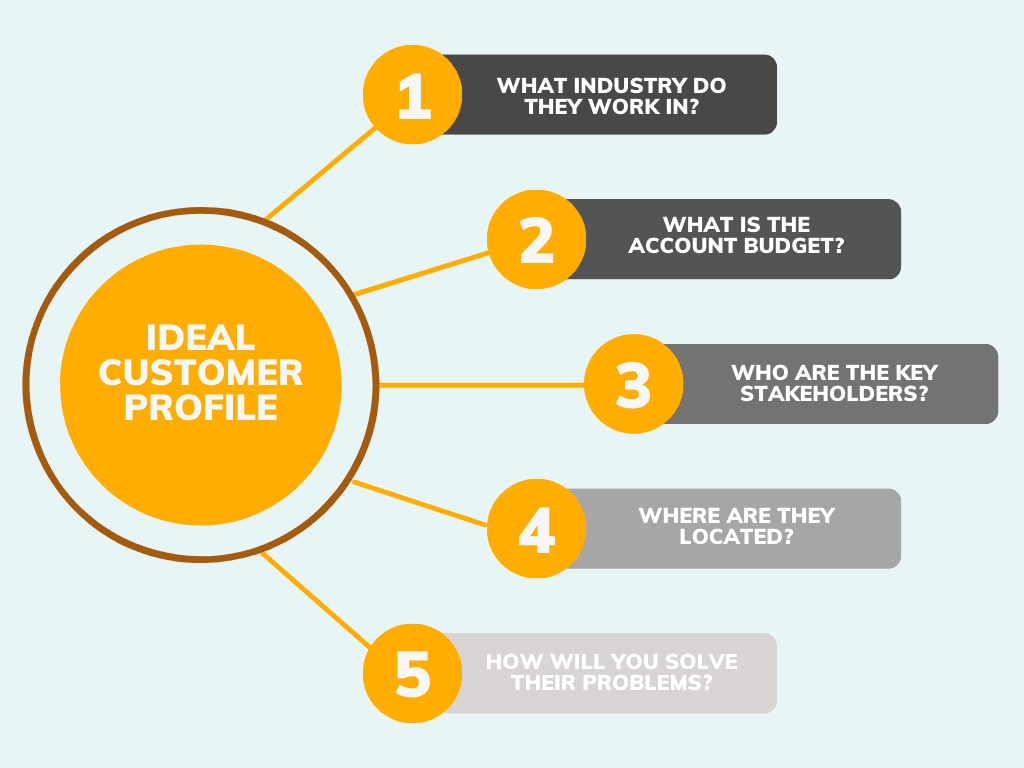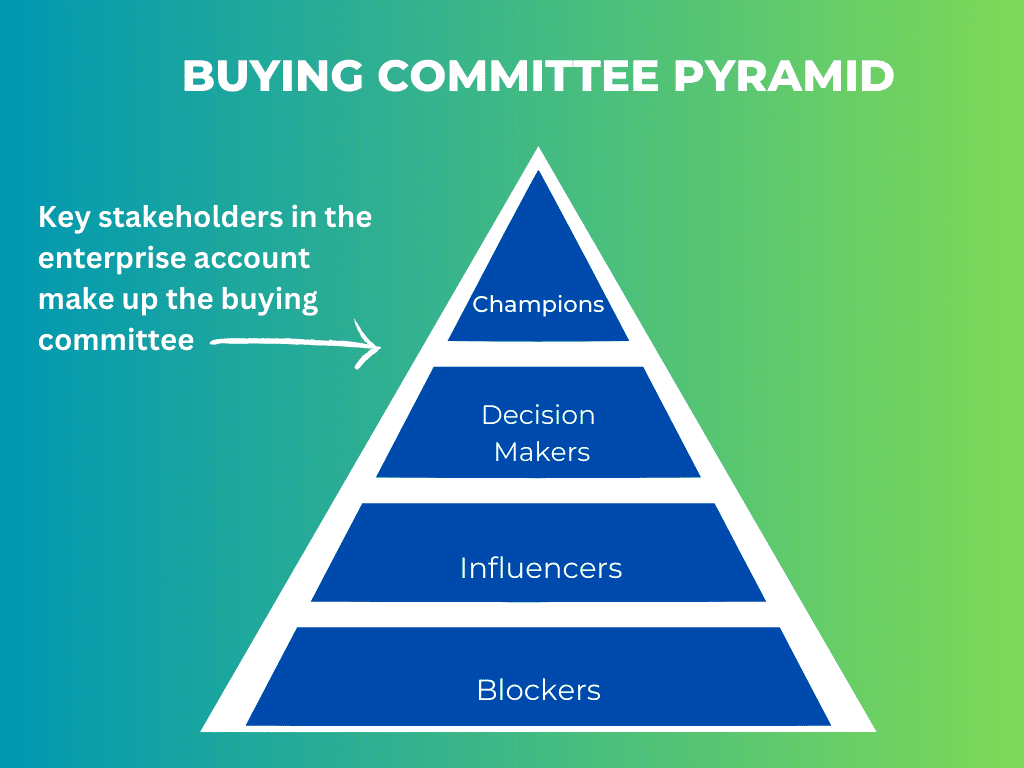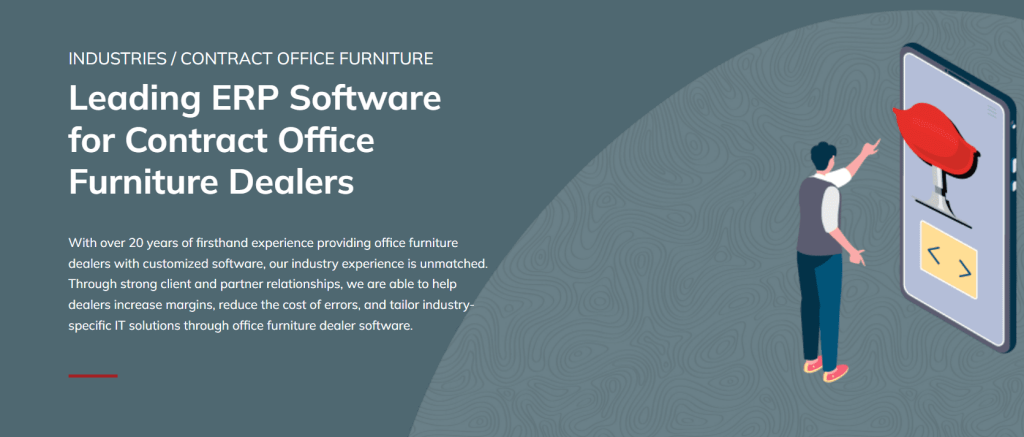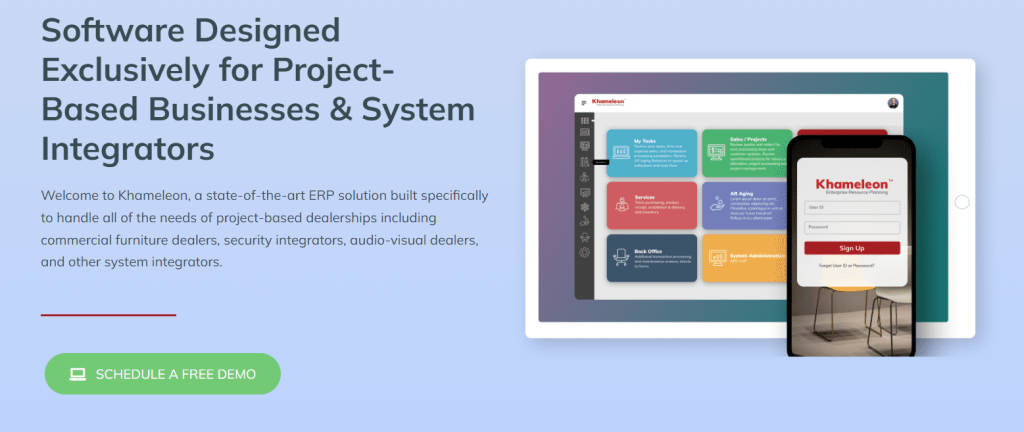High-Value Clients: How to Identify Ideal Customer Profiles

The first step to a successful account based marketing (ABM) campaign is to identify your high-value clients. After all, the goal of ABM is to pursue very specific, high-value accounts.
Also known as Ideal Customer Profiles (or ICPs for short), these high profile customers should make up the majority of your bottom line. The only problem is… you have no idea where to start! How on earth do you identify and market to these accounts?
Don’t worry. If you’re a beginner to ABM, then you’ve come to the right place.
In this article, we’ll teach you how to easily identify, target, and market to high-value clients.
Keep reading to learn:
- How to identify your ideal customer profile (worksheet provided)
- Unlocking the buyer committee
- ICP vs buyer persona: what’s the difference?
- Real-life ICP example
- 5 fool-proof ways to target high-value clients
- FREE Ideal Customer Profile Template
Let’s dive right in!
What is an Ideal Customer Profile?
An ideal customer profile is exactly what it sounds like. It describes the most ideal type of company account that you DREAM of doing business with.
For B2B, ICPs are accounts that you believe would be a perfect match for your products or services.
Oftentimes, they are high-value clients that have a very specific need that only your company can solve. Furthermore, they have a lofty budget that can accommodate the costs of your products or services AND are willing to invest in the time it takes to partner with your team.
So, how do you identify your ICP?
How to Identify an Ideal Customer Profile

Here’s an insider secret: The BEST way to find your ideal customer profile is to take a look at your CURRENT clients and interview them. This is particularly important if you have a strong network of long-term clients that have worked with you for many months – if not years.
These clients will give you a good idea of what they find most valuable in your brand and your offering. Plus, they will paint a good picture of the type of enterprise accounts you should target (i.e. account demographics – number of employees, location, budget, and industry). Chances are, your ICP will have similar interests and work in similar industries.
ICP 101: Questions to Ask
When identifying your ICP, you’ll want to explore a fictitious business that you believe would be the perfect enterprise to work with. In your head, imagine your ideal client account. Here are some questions to ask yourself:
- How would they ideally respond to your sales team?
- What is their budget?
- How big are their operations?
- Where are they located?
- What are their primary needs?
- How big is their customer base
- Are these needs perfectly solved by your products or services?
- How much time are they willing to commit to migrating to or partnering with your company?
Once you answer these questions, you’ll have a pretty good idea of your ICP. Then, you can go out into the real world and search for high-value clients that fit your ICP.
Need help building your ICP? Here’s a FREE ideal customer profile template for you to download.
Unlocking the Buying Committee

Next, one of the foundational pillars of discovering your ICP is the buying committee. In essence, the buying committee is the group of people that influence buying decisions within high-value accounts. For instance, key stakeholders in the company such as CEOs, CMOs, VPs of Marketing, and Directors will make up the core of the buying committee.
Why is it important to understand this?
Because you will have to (1) tailor marketing and sales directives towards each member of the buying committee and (2) know the desires, needs, and pain points of the stakeholders.
Who Makes Up the Buying Committee?
To keep it simple, the buying committee is made up of 4 types of people:
- Champions: Key stakeholders in the company that are in charge of initial vendor research. Typically, they will become the end-users of your offering and are the face of the company (such as the CEO)
- Decision Makers: Senior executives that actively participate in the deal. They are usually in charge of big decisions, such as negotiations, budget approval, and budget delegation
- Influencers: People both inside and outside of the business that provide valuable feedback and opinions about the deal. For instance, an external consultant hired by the CEO would be considered an influencer
- Blockers: Members of the buying committee that are wary of or against your solution. Oftentimes, these people have doubts about the efficacy, price, or value of your offering. They will speak up about their concerns to key decision makers
It’s your responsibility to identify and research each type of committee member in the accounts you pursue. Each person plays a big role in the decision to choose your company as a partner, so it is wise to really investigate the buying committee before you pursue the high-value client.
ICP vs Buyer Persona: What’s the Difference?

An ICP sounds a lot like buyer persona. In fact, a buyer persona often work in tandem with an ICP. However, it’s important to understand that they aren’t the same thing.
On one hand, a buyer persona describes an individual person or audience segment that would benefit from your products or services. On the other hand, an ideal customer profile captures the overall business account that you are targeting. For instance, if your ICP is a chain of hospitals, then your buyer persona would likely describe a high-ranking official that works for the hospital chain, such as the operational manager or director.
In general, buyer personas and ICPs can help direct your marketing and sales teams to work together to reach a common goal (which is, in essence, the purpose of account based marketing).
Now let’s take a quick look at an example of a company who has mastered their ICP and has drawn in many ideal clients because of it.
Khameleon Software: ICPs for a Niche Software Solution
Khameleon offers a specialized enterprise resource planning system made for project-based dealerships. This B2B company has a very specific niche market: commercial furniture dealers.
Since Khameleon uses account-based marketing to achieve the vast majority of their marketing goals, the company has developed a strong understanding of their ideal customer profile: high-value office furniture dealers.

Over the years, Khameleon has created long-lasting partnerships with big-name members of the commercial furniture world, including Haworth. They also aligned with integrations that project-based dealerships would find valuable, such as Avalara, Configura, and SolomonCoyle. These alliances allow them to appeal greatly to their ICP, which quickly turn into long-term, high-value clients.
Through these unique partnerships and integrations networks, along with a solid offering, a strong understanding of their ICP, and a tactical ABM strategy, Khameleon has successfully defined, targeted, and reached high-value clients.
5 Fool-Proof Ways to Target High-Value Clients
So, how can YOU target and market to YOUR high-value clients? Here are 5 must-use tactics to land your dream accounts.
1. Provide a Desirable Offering
First and foremost, your product or service MUST provide immense value to your ideal clients. There’s a good chance your offering costs a pretty penny, not to mention all of the hours it potentially takes to onboard your products or services.
If you offer a high involvement, high priced offering, then you have to make sure you can adequately explain the value your clients will receive when they choose to work with you.
Work with Compatible Enterprises
Here’s a good rule of thumb to follow: Only market to enterprise accounts that you believe will have the best chance of working with your company. Through research and analytics, you can identify accounts that have:
- A need for your product or service
- A budget to support your offering
- The ability to invest time into the onboarding process
Once you know what makes your offering desirable (and stand out from the competition) AND identify the right company accounts to pursue, then follow this next step.
2. Get to Know Key Stakeholders (AKA: The Buying Committee)

Assuming you’ve defined your ICP and already have a list of company accounts you’d like to target, we recommend you take the time to research all of the main players in each account. As we mentioned before, the key stakeholders are part of the enterprise’s buying committee.
Ask the following questions:
- Who is the CEO?
- Who works under them?
- How many employees does the business have?
- And, of those employees, who makes the big decisions?
- Are there any key influencers (both internal and external) that persuade in favor or against your offering?
- Who are the blockers and what are their pain points?
When it comes time to market to the key stakeholders in the account, you’ll want to create content that resonates with each individual you target. This might mean you’ll have to build different campaigns for the CEO, CMO, CFO, and other important account heads.
At this time, your sales and marketing team will have to work together to create a strategy that will win over each stakeholder.
3. Ask the Right Questions
Next, when targeting high-value clients, you have to make sure your business is the right fit for them. Otherwise, you’re wasting a lot of marketing resources on a deal that will likely fall through.
In particular, you need to ask the right questions from the get-go (even before you reach out to stakeholders!). Proper research and analysis is extremely important if you want to land a “prize account.”
Rule Out Legal Restrictions
For instance, does the client in question stipulate any legal or contractual limitations? In other words, are there any legal conflicts of interest that would cause problems for you down the road. For example, do you already work with an account that is a direct competitor for any of your ideal clients?

Next, make sure there aren’t any location-based restrictions that would inhibit you from doing business with the desired account. If you uncover these hurdles from the very beginning, it will save you a lot of time and money in the long run.
4. Build a Relationship with High-Value Accounts
Account based marketing is all about relationships! There’s a good chance your product or service takes a lofty investment of time or money (sometimes BOTH) to onboard. Therefore, it’s extremely important to establish a trustworthy, transparent, and honest relationship with key stakeholders from the very beginning.
Relationships Resolve Risk for the Client
The point of the relationship is to alleviate any pain points the client may have about your brand and offering.
If they are going to invest a lot of capital into your business, then they need to know upfront if your solution will really work for them. You want to show them how easy you are to work with and that you have their best interests in mind. This requires strong relationship-building skills on your part to build this initial foundation.
5. Provide Value from the Get-Go

A simple way to initiate a relationship is to offer a free asset, such as a useful webinar, an informative guide, or a free demo of your service. Work with each lead one-on-one and provide REAL value that is PERSONALIZED to each contact.
The more you can tailor your content to the individual account, the easier it will be to create a foundation of mutual trust and support.
Pro-Tip: Ask your current clients what they value most in their partnership with you. Their answers will give you a good idea of what future clients will find value in as well.
Final Thoughts (& FREE ICP Template)
If you are a B2B company, then you most likely cater to high-value clients! When you create an ideal customer profile, you’ll be able to target the right accounts that best match your business model. Then, you can successfully align your account based marketing efforts to each individual client.
Need help building your ICP? Here’s a FREE ideal customer profile template for you to download.
If you need further help, feel free to reach out to us anytime!
At Chatter Buzz, we have a whole team of digital marketing experts that have years of experience with B2B strategies. Our strategists are ready to help you create the best ICP for your ABM strategy.
Do you need someone to help you achieve your growth goals - then let us help you crush them? Let's chat!
Error: Contact form not found.









